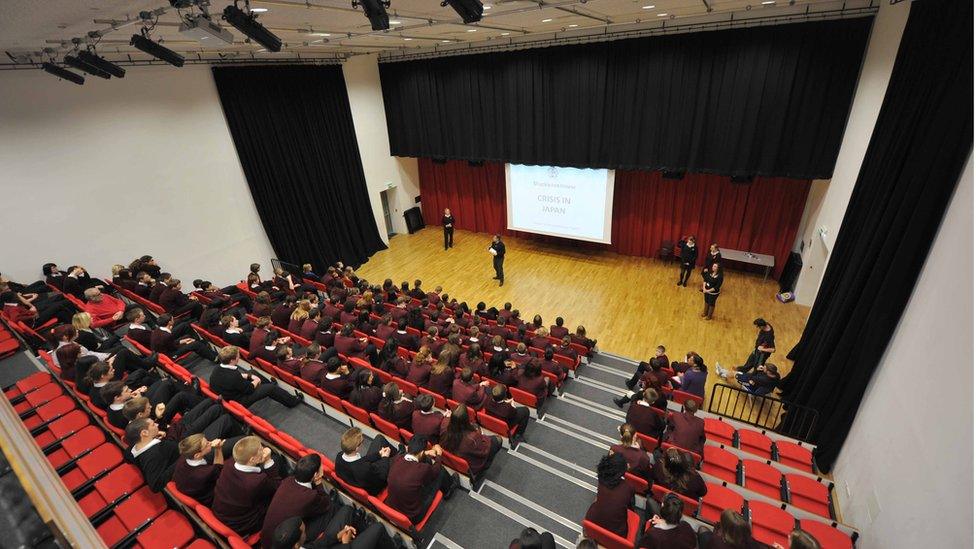How many teachers does a school need?
- Published

Do schools in England have enough teachers?
There is at the very least a severe disconnect between the different views, and the gap shows no sign of closing.
Almost every head teacher you speak to will regale you at length with the difficulties of getting enough decent applicants for a job.
Ministers point to national figures showing a stable teacher to pupil ratio.
But as the National Audit Office also points out today, in its understated way, the official statistics only tell you so much.
The number of vacancies or posts filled temporarily has doubled but is still at 1.2% of the workforce.
This doesn't tell us who is standing in front of that class.
Although, as this report makes clear, if it's physics the chances of it being someone who has only reached A-level have got greater.
Almost a third of secondary school physics classes in England are now being taught by someone without a degree in the subject.
And in computer science or Spanish it nudges over 40%.
Nuanced
Nor does the data tell us what is the right number of teachers, perhaps quite sensibly, because schools and their pupils vary so much.
Analysis for the NAO of similar primary schools with about 200 children found some had the equivalent of 12 full time teachers, while others had only 7.
That is quite a staggering difference.
It adds to the arguments for a more subtle and nuanced view of teacher recruitment than the headline figures.
Predicting how many teachers schools need against a background of rising pupil numbers and more emphasis on teaching core subjects isn't easy.
England's independent public spending watchdog is warning a better grasp of it is needed by officials.
And one thing is certain, if there are shortfalls in recruitment to teacher training now, they are likely to get worse if the economy improves any further.
- Published26 January 2016
